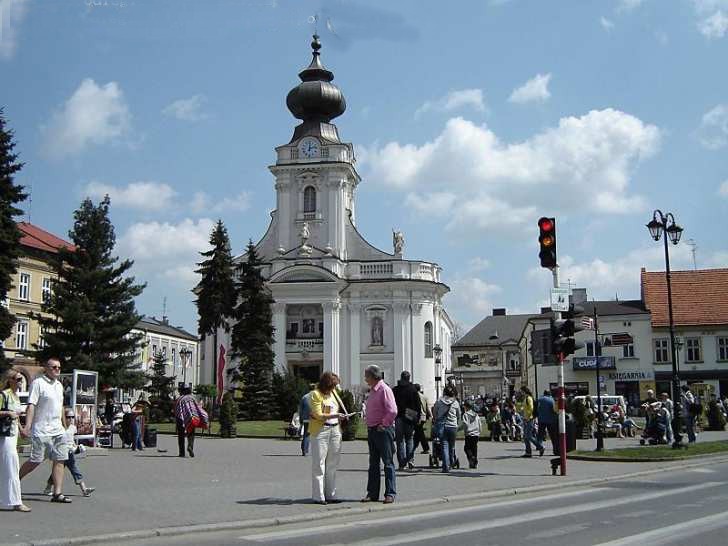Wadowice [vadovitse] is a town in southern Poland, 50 km from Krakow with 19,200 inhabitants (2006), situated on the Skawa river, confluence of Vistula, in the eastern part of Silesian Plateau (Pogorze Slaskie). Wadowice is best known for being the birthplace of Pope John Paul II.

The first permanent settlement in the area of today's Wadowice was founded in late 10th century or early 11th century. According to a local legend, the town was founded by certain ‘Wad’ or ‘Wlad’, a short form for the Slavic name of Ladislaus (Polish: Wladyslaw). The town was first mentioned as Wadowicze in St. Peter penny register in years 1325–1327. In 1327 it is also mentioned (under the same name) in a fief registry sent from prince John I Scholastyk of Oswiecim to Bohemian king John I, Count of Luxemburg. At this time it was a trading settlement belonging to the Dukes of Silesia of the Piast Dynasty, and according to some historians it was already a municipality. In 1430 a great fire destroyed the town. It was soon rebuilt and granted city rights, along with a city charter and a self-government, based on the then-popular Kulm law. The privileges, granted by Prince Kazimierz I of Oswiecim led to a period of fast reconstruction and  growth.
growth.
The administrative division of the region in the times of regional division was complicated. Initially, between 1313/1317 and 1445, Wadowice belonged to the Silesian Duchy of Oswiecim and after 1445 to the Duchy of Zator. In 1482 Wladyslaw I of Zator inherited only half of his father's lands and created a separate Duchy of Wadowice, which lasted until his death in 1493. The following year his brother and successor, Jan V of Zator abdicated. At the same time the land was subject to Bohemian overlordship, which lasted until the following year, when the Duchy was bought by the Kings of Poland and incorporated as a Silesian County. Finally, the County was incorporated into the Krakow Voivodeship in 1564.
Krakow Voivodeship in 1564.
In the 16th-17th centuries Wadowice was a regional centre of crafts and trade. Among the most notable sons of the town was Marcin Wadowita, a theologian, philosopher and a deacon of the Krakow Academy. He was also the founder of a hospital and a basic school in Wadowice. However, several plagues and fires halted the prosperity and the town's growth was eventually halted as well.
After the World War I and the dissolution of the monarchy, Wadowice became part of the newly-reborn Poland. The seat of a powiat remained in the town and in 1919 the inhabitants of the area formed the 12th Infantry Regiment that took part in the Polish-Bolshevik War of 1919–1920. In 1920 Karol Wojtyla was born in Wadowice (later known as the bishop of Krakow and Pope John Paul II).
After the war, in 1945 Wadowice retained  its powiat town status and until 1975 served as a
its powiat town status and until 1975 served as a  notable centre of commerce and transport in the Krakow Voivodeship. After that the town was transferred to the newly-created Bielsko-Biala Voivodeship. After the peaceful transformation of the political and economical system in Poland (in 1989), most of the local industry was found inefficient and went bankrupt. However, the ecological and historical heritage of the area as well as its status as the birthplace of Pope John Paul II led to fast growth of tourism. Currently more than 200,000 people visit Wadowice every year and this number is rising.
notable centre of commerce and transport in the Krakow Voivodeship. After that the town was transferred to the newly-created Bielsko-Biala Voivodeship. After the peaceful transformation of the political and economical system in Poland (in 1989), most of the local industry was found inefficient and went bankrupt. However, the ecological and historical heritage of the area as well as its status as the birthplace of Pope John Paul II led to fast growth of tourism. Currently more than 200,000 people visit Wadowice every year and this number is rising.
Wadowice is today mainly a centre for tourism and sightseeing, but also a place for small industries such as the production of machines and construction materials. There is also the headquarters of the biggest juice-maker of Poland - Maspex - and the shoe producer - Badura.

